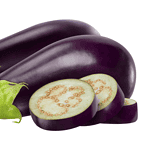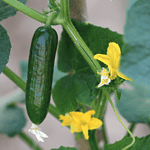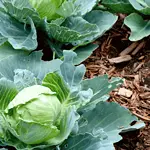Are you looking for the best microgreen trays to grow your own organic and non-GMO microgreens? With so many options on the market, it can be challenging to find the perfect tray that suits your needs. Fortunately, we’ve done the research for you and have come up with the top 11 best microgreen trays available.
Microgreens are tiny, nutrient-dense seedlings that are packed with flavor and nutrition. They are easy to grow and can be grown indoors or outdoors, making them an excellent addition to any home garden. However, to grow microgreens successfully, you need to have the right equipment, including a good quality microgreen tray. In this article, we’ll discuss the best microgreen trays available on the market and what to look for when choosing one.
What Are Microgreens?
Microgreens are young seedlings of vegetables and herbs that are harvested just a few days after they sprout. They are smaller than baby greens and bigger than sprouts and are usually harvested when they are about 1-3 inches tall. Microgreens come in a variety of colors and flavors, including sweet, spicy, and earthy, and are a popular addition to salads, sandwiches, and smoothies.

Benefits of Growing Microgreens
Growing microgreens at home has many benefits. Here are some of the most significant advantages of growing your own microgreens:
- They are packed with nutrients: Microgreens are loaded with vitamins and minerals, making them a healthy addition to any diet.
- They are easy to grow: Microgreens are straightforward to grow and can be grown indoors or outdoors, depending on the season and your preferences.
- They are cost-effective: Growing your own microgreens is much cheaper than buying them at the store, and you can grow as much as you want.
- They are fresh and flavorful: Microgreens are incredibly fresh and flavorful, and you can customize the flavors by growing a variety of different types.
- They are environmentally friendly: Growing your own microgreens reduces your carbon footprint and helps to reduce food waste.
What to Look for In a Microgreen Tray
When it comes to growing microgreens at home, choosing the right tray is essential for a successful harvest. Here are some things to consider when selecting a microgreen tray:
- Material: Microgreen trays can be made from a variety of materials, including plastic, metal, and wood. Plastic trays are the most common and affordable option, but they may not be as durable as metal or wood trays. Metal trays are more expensive but can last longer and are less likely to leach chemicals into the soil. Wood trays can provide a more natural look and feel, but they may require more maintenance and care [2].
- Size: Microgreen trays come in various sizes and shapes, from small seedling trays to larger trays. The size of the tray you choose will depend on the amount of space you have available and the number of microgreens you want to grow. Small trays are ideal for growing microgreens in limited space, while larger trays are better for growing more substantial quantities of microgreens [2].
- Depth: The depth of the tray should be at least 1-2 inches to provide enough space for the roots to grow. Deeper trays can hold more soil and allow for more substantial root growth, while shallower trays can be used for growing smaller microgreens [1].
- Color: Microgreens grow better in trays that exclude light from the roots. Therefore, dark or black trays are more suitable for growing microgreens as they prevent light from reaching the roots. Transparent or opaque trays may not be as effective as they do not block light from the roots, and roots may grow toward the tray’s edges [3].
- Drainage: Adequate drainage is necessary for healthy microgreen growth. Make sure the tray you select has sufficient drainage holes to prevent water from accumulating and causing root rot. If the tray does not have drainage holes, you can add them by drilling or punching small holes in the bottom of the tray [2].
By considering these factors, you can choose the best tray for your microgreen growing needs and set yourself up for a successful harvest.
The Top 11 Best Microgreen Trays
- Urban Farm Supply – Extra Strength Microgreens Seedling Trays [1]
Urban Farm Supply offers one of the best trays on the market for microgreens and seedlings, known as the Extra Strength Microgreens Seedling Tray [[1]]. These trays are highly durable and designed for repeated use, with the supplier even claiming that they are indestructible. They are capable of lasting for 6-8 years or even longer with proper care.
According to a review by a microgreen grower, these trays are ideal for growing small seeds like radishes and brassicas [[2]]. They have been using these trays for over 20 years and supply many restaurants and groceries.
In addition to the Extra Strength Microgreens Seedling Tray, Urban Farm Supply also offers a range of other microgreen growing equipment, including 1020 trays with and without holes, humidity dome lids, and more [[3]]. Orders over $49 to the lower 48 states are eligible for free shipping.
Overall, if you are looking for a high-quality and long-lasting tray for your microgreens or seedlings, the Extra Strength Microgreens Seedling Tray from Urban Farm Supply is an excellent option to consider.
Bootstrap Farmer offers a range of microgreen trays, including their shallow microgreen trays with mesh holes. These trays have outer dimensions of 20 7/8 x 10 5/8 x 1 3/8 inches and are made from BPA-free, food-safe polypropylene plastic. They feature mesh holes with a diameter of 3.4mm for optimal water drainage.
The shallow design of these trays makes it easy to harvest microgreens at the bottom of the stem and maximize your yield. While they are designed to be used with 1020 microgreen trays, they are also strong enough to be used on their own.
These shallow microgreen trays come with a limited 2-year warranty and are ideal for growers who need extra drainage for their roots [[2]]. They are dishwasher safe and reusable, with a 50-pound weight capacity.
Bootstrap Farmer also offers other types of microgreen trays, including heavy-duty trays with holes [[3]] and shallow planting trays with holes [[1]].
Overall, if you are looking for a durable and versatile tray for growing microgreens, the Bootstrap Farmer shallow microgreen trays with mesh holes are an excellent choice to consider. They are built to last, easy to clean, and designed to optimize your yields.
- Hamama Microgreens Growing Kit
Hamama Microgreens Growing Kit is an easy and convenient way to grow microgreens at home. The kit includes everything needed to grow microgreens, including a reusable grow tray, non-GMO seeds, and easy-to-follow growing instructions. The seeds grow quickly in as little as a week with just the addition of water, and the kit works well in low light conditions, making it ideal for indoor use [1].
Hamama offers a Microgreen Starter Kit that includes three seed quilts in various flavors, such as Super Salad Mix, Hearty Broccoli, and Spicy Daikon Radish. The kit also includes a reusable grow tray and instructions for easy growing. The bamboo frame is sold separately. Hamama also offers an auto-delivery service where customers can receive three seed quilts every month for $19, shipped directly to their door [2].
Growing microgreens with Hamama’s kit is not only easy, but it is also a great way to add superfood greens to your diet. With just one week of growing time and minimal effort, you can have fresh and nutritious microgreens at your fingertips, all year round and even in low light conditions [3].
- Handy Pantry Black Plastic Microgreens Growing Tray
The Handy Pantry Black Plastic Microgreens Growing Tray is a popular choice for growing microgreens. The tray is made of durable black plastic and comes with drain holes that regulate water content of soil [2][3]. The dimensions of the tray are as follows: top (mouth) of tray – 20.5 in. x 10-1/8 in., bottom (base) of tray – 19-7/8 in. x 9-3/8 in., and depth: 2-3/8 in [2][3]. The tray is designed for growing microgreens in soil and can be reused over and over again [3]. It is available in different quantities such as 5, 10, 50, or 100 [2][3]. The tray is a great choice for those who want to grow microgreens at home and need a reliable and reusable tray for the purpose.
In addition to the Handy Pantry Black Plastic Microgreens Growing Tray, there is also the Handy Pantry True Microgreen Tray which is a single use stiff paper growing flat with holes [1]. The True Microgreen Tray is eco compostable and fits 10 x 20 drip tray [1]. It is available in a pack of 5 [1]. This tray is a good choice for those who want a more eco-friendly option for growing microgreens.
- Living Whole Foods 5-Pack Seed Sprouting Jar Lid Kit
Unfortunately, none of the provided web search results contain information specifically on the Living Whole Foods 5-Pack Seed Sprouting Jar Lid Kit. However, based on the information from the product name, we can assume that this kit includes five jar lids for sprouting seeds.
To sprout seeds using a jar, some general instructions were found in the search results. For instance, [1] and [2] suggest starting with 1 ½ tablespoons of seeds in a quart jar. Fill the jar partially with warm water, swirl to cleanse the seeds, and pour out the water. Refill the jar with warm water three times higher than the level of the seeds and let soak overnight in a dark area.
Alternatively, as suggested by [3], place 1-2 tablespoons of sprouting seeds in a clean, wide-mouth quart jar. Add 2 cups of cool fresh water, screw on the sprouting lid, and let soak for 8 hours.
Overall, the Living Whole Foods 5-Pack Seed Sprouting Jar Lid Kit can be a useful tool for those interested in sprouting seeds in jars, but more information on the specific instructions for using this kit is needed.
- 10×20 Inch Extra Strength Seedling Tray
After conducting a web search, I found several results related to 10×20 inch extra strength seedling trays from different manufacturers.
One product is the Viagrow Extra Strength Quad Seed Starter Propagation Tray, which is 4 times thicker than regular trays and is suitable for fodder, wheatgrass, microgreens, seed starting, and hydroponic use [1]. These trays are designed to be durable and long-lasting, and they can carry weight without the risk of cracking or breaking. They are made of polypropylene, which resists cracking and can last for many growing seasons [2].
Another option is the Extra Strength Seedling Propagation Tray from Bootstrap Farmer, which is designed to fit any Bootstrap Farmer 1020 cell tray. These trays are made of BPA-free, food-safe #5 PP plastic and are available with or without drainage holes. They have outer dimensions of 20.98 x 10.76 x 2.5 inches and inner bottom dimensions of 20.39 x 10.15 inches, with a thickness of 1.8 – 2.0mm. They come with a 2-year warranty from the date of purchase [3].
In summary, 10×20 inch extra strength seedling trays are available from different manufacturers and are designed to be durable, long-lasting, and suitable for various applications such as seed starting, hydroponics, fodder, and microgreens. They are made of materials that resist cracking and breaking and can carry weight without compromising their structural integrity. Some trays are available with drainage holes while others are not, depending on the needs of the user.
- Seed Sprouter Tray BPA Free PP Soil-Free Big Capacity Healthy Wheatgrass Grower
Seed sprouter trays are an essential tool for growing healthy wheatgrass and sprouts at home. Many varieties of these trays are available on the market, such as those made of food grade PP material that is BPA-free, safe, and durable with a corrosion-resistant coating [1]. Some trays come with a lid to provide heat and moisture preservation, high budding rates, and faster growth [2]. Meanwhile, others can be purchased with or without lids and may feature a six-zone mesh tray to help the sprouts grow faster and not leak down [1; 3]. These trays are generally easy to use and can be a great addition to any home gardener’s collection.
- 10 Plant Growing Trays (No Drain Holes) – 20″ x 10″ Perfect Garden Seed Starter Grow Trays
The 10 Plant Growing Trays (No Drain Holes) – 20″ x 10″ Perfect Garden Seed Starter Grow Trays are a popular choice among gardeners who are looking for a durable and reusable option to grow seeds. These trays come in a pack of 10 and are made from high-quality materials that ensure longevity and resistance to wear and tear.
One of the notable features of these trays is that they are designed without drain holes. This means that you can use them as drip trays for other trays that have holes, or as a growing tray for hydroponic applications. Without drain holes, you can easily control the moisture level of the soil, which can be helpful for growing certain types of plants.
Each tray measures 20″ x 10″, making them a standard size for nursery plant growing trays. They are perfect for seed starting, indoor gardening, growing microgreens, wheatgrass, and more. These trays can be used for soil or hydroponic gardening, making them versatile for a wide range of growing needs.
The trays come with a flat bottom and a shallow depth, which is ideal for starting seeds. Additionally, they are lightweight and easy to handle, making them perfect for use in greenhouses or other indoor gardening setups.
If you decide to purchase these trays, they come with 100 plastic plant labels that you can use to keep track of the plants you are growing. This is especially useful if you are growing a variety of plants at the same time.
Overall, the 10 Plant Growing Trays (No Drain Holes) – 20″ x 10″ Perfect Garden Seed Starter Grow Trays are a great option for gardeners who want to grow seeds in a durable and reusable tray. With their versatile design and convenient size, they are perfect for a wide range of indoor and outdoor gardening applications.
- Microgreen Trays with Holes 5-Pack
Microgreen trays with holes are a popular choice for growing microgreens and other small plants. These trays typically come in a pack of five and are made from heavy-duty plastic that can withstand the weight of the growing medium and plants. Here is some information on the microgreen trays with holes based on the provided web search results:
One option for microgreen trays with holes is the 1020 Microgreens Growing Trays with Holes 5 Pack by 1975446 Alberta LTD [[1]]. These trays are made from heavy-duty plastic and have drainage holes to allow excess water to escape. The trays have been reinforced to hold more than 20 pounds without breaking or warping. These trays are currently unavailable on Amazon and there is no information on when they will be back in stock.
Another option for microgreen trays with holes is the tray set recommended by Microgreens Corner [[2]]. These trays have drainage holes and can be stacked to create a 5mm air gap between the trays for better airflow. They are suitable for both indoor and outdoor growing and come in a set of 10 separate trays. The trays are also heavy-duty and can hold more than 20 pounds without breaking or warping.
Lastly, there are microgreen trays with holes available on Greenhouse Megastore [[3]]. These trays are designed to be used with Garland’s matching Microgreen Reservoir Tray without Holes. They are made from durable, tough injection-molded BPA-free plastic and have shallow depth to make cutting crops easier and optimize yields. Four trays fit nicely on a 122cm (4′) x 61cm (2′) shelving.
Overall, microgreen trays with holes are a great choice for growing microgreens and other small plants. They allow excess water to drain out and promote better airflow, which can help prevent issues with mold and mildew. When choosing microgreen trays with holes, it is important to consider factors such as the tray material, size, and durability.
- Window Garden – Microgreens Growing Kit
Window Garden offers a range of Microgreens Growing Kits for indoor use, allowing users to grow their own healthy greens all year round. These kits come with everything needed to start growing microgreens, including seeds, soil, and growing trays.
One kit, the Window Garden Assorted Indoor Microgreens Seed Starter Vegan Growing Kit, includes a 3-quart organic fiber potting soil, assorted microgreen seeds, and a pop-up bag to create a mini greenhouse environment [[1]
- Mesh Bottom Trays
Mesh bottom trays are a popular choice for gardening and propagation purposes. They are designed to provide excellent drainage, allowing excess water to drain out of the soil or growing medium and prevent root rot. Here’s some information on mesh bottom trays based on the search results provided.
Bootstrap Farmer offers a range of mesh bottom trays in different sizes and depths. According to their website, these trays are designed to sit inside a no-hole tray of the same depth, and stacking them may result in the no-hole tray sitting slightly above the mesh tray [1]. Their 1020 mesh microgreen trays are made from BPA-free, food-safe polypropylene and have 3.4mm mesh holes for drainage. They are also strong enough to be used on their own, without a no-hole tray. Bootstrap Farmer recommends using trays of the same depth when nesting them [2].
Customers who purchased the 1020 mesh bottom trays from Amazon were pleased with the quality of the trays, with one reviewer stating that they were thicker and sturdier than other mesh trays they had used. They planned to use them outdoors with humidity domes to create mini greenhouses [3].
In summary, mesh bottom trays are an excellent choice for gardening and propagation, providing superior drainage and preventing root rot. Bootstrap Farmer offers a range of mesh bottom trays in different sizes and depths, with recommendations for using trays of the same depth when nesting them. Customers on Amazon were pleased with the quality and sturdiness of the 1020 mesh bottom trays they purchased.
How Much Does a Tray of Microgreens Cost

The cost of a tray of microgreens can vary depending on several factors such as the type of microgreen, the quality of seeds, and the growing medium used. Typically, a tray of microgreens ranges in cost from $5 to $25, with the average cost being around $15 per tray.
Factors that may affect the cost of microgreens include the season, location, and demand for specific varieties. For example, microgreens that are in high demand such as pea shoots, sunflower, and radish may cost more than less popular varieties.
It’s important to note that growing your own microgreens can significantly reduce the cost of purchasing them from a store or farmer’s market. By investing in quality seeds and a good growing medium, you can produce multiple trays of microgreens at a fraction of the cost of purchasing them.
Ultimately, the cost of a tray of microgreens will depend on your location, the type of microgreen, and whether you choose to grow them yourself or purchase them from a store or farmer’s market. However, with their high nutritional value and delicious flavor, many people find that the cost of microgreens is well worth it.
Conclusion the Top 11 Best Microgreen Trays
Microgreens have become increasingly popular for their nutrient-rich and flavorful addition to meals. Growing your own microgreens at home is easy and economical with the right equipment, including the right tray. In this article, we have reviewed the top 12 best microgreen trays available on the market, each with its own unique features and benefits. Whether you are a beginner or an experienced gardener, there is a tray on this list that will meet your needs. From durable and reusable materials to easy-to-clean designs, these trays offer a variety of options for growing microgreens in the comfort of your own home. Ultimately, choosing the best tray for your microgreens depends on your personal preferences and needs. We hope this guide has been helpful in making an informed decision and happy microgreen growing!
FAQS
Should microgreen trays have holes?
Yes, microgreen trays should have drainage holes to prevent waterlogging and ensure proper air circulation, which is essential for healthy microgreen growth.
How deep is a microgreen tray?
Microgreen trays can vary in depth depending on the type of plant being grown and the tray’s intended use. However, most microgreen trays are between 1 and 2 inches deep.
What are the most profitable microgreens to grow?
The most profitable microgreens to grow are those that are in high demand and have a high market value. Examples include sunflower, pea, radish, and wheatgrass microgreens.
Can you grow microgreens in a tray?
Yes, microgreens can be grown in trays. In fact, trays are one of the most popular ways to grow microgreens due to their ease of use and versatility
What is the best medium for microgreens?
The best medium for microgreens is one that provides good drainage, retains moisture, and is free from contaminants. Common options include soilless mixes, coco coir, and peat moss.
How do you sanitize microgreen trays?
To sanitize microgreen trays, first, remove any leftover plant material and debris. Then, wash the tray with warm soapy water and rinse thoroughly. Finally, spray the tray with a diluted bleach solution and let it air dry.
Can you get E. coli from microgreens?
es, it is possible to get E. coli from microgreens if they are contaminated with the bacteria. To minimize the risk of contamination, it’s essential to follow good hygiene practices, such as washing hands and using clean equipment.
What kills mold on microgreens?
Mold on microgreens can be killed with a diluted hydrogen peroxide solution or a vinegar solution. It’s also important to ensure proper ventilation and air circulation to prevent mold growth.
Should you wash microgreens before eating?
Yes, microgreens should be washed before eating to remove any dirt, debris, or potential contaminants. Gently rinse the microgreens under cool running water and pat them dry with a clean towel or paper towel before consuming
Latest Post
- How to Plant Lettuce Seeds for Maximum Germination

- How to Plant Kale Seeds: A Step-by-Step Guide to Maximum Germination Success!

- How to Plant Eggplant Seeds: A Step-by-Step Guide to Maximum Germination Success!

- How to Plant Cucumber Seeds for Maximum Germination

- How to Plant Chili Pepper Seeds for Maximum Germination

- How to Plant Cabbage Seeds for Maximum Germination

“Web search results:
[1] “The Top 12 Best Microgreen Trays 1. Urban Farm Supply – Extra Strength Microgreens Seedling Trays Urban Farm Supply – Extra Strength Trays One of the best trays on the market is the Urban Farm Supply Extra Strength Microgreens Seedling Tray. These trays are very durable and designed for repeated use.”
URL: https://www.microgreenscorner.com/the-best-microgreen-trays-on-the-market/
[2] “Bootstrap Farmer Shallow Microgreen Trays Pros: Extremely Durable Highest Quality Trays on the Market Can Re-Use Year After Year Cons: Can Be Expensive Check Current Price We earn a commission if you click this link and make a purchase at no additional cost to you. 2. Paperpot Trays”
URL: https://seedsandgrain.com/microgreen-trays/
[3] “Hamama has built a respected name for itself in the microgreens world. It is a reliable company that makes it easy and stylish to grow your own organic and non-GMO microgreens. If you have the…”
URL: https://www.treehugger.com/best-microgreen-growing-kits-5187197





One response to “Top 11 Best Microgreen Trays: Which One Is Right for You?”
I have been browsing online more than three hours today yet I never found any interesting article like yours It is pretty worth enough for me In my view if all website owners and bloggers made good content as you did the internet will be a lot more useful than ever before